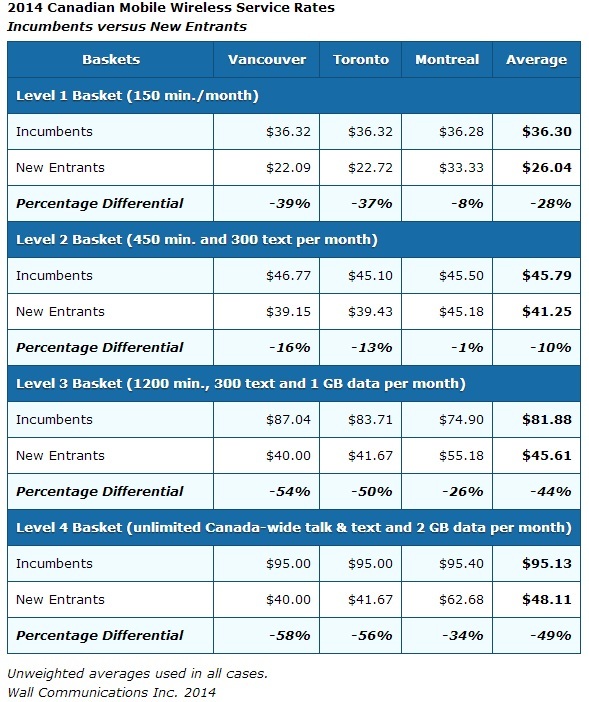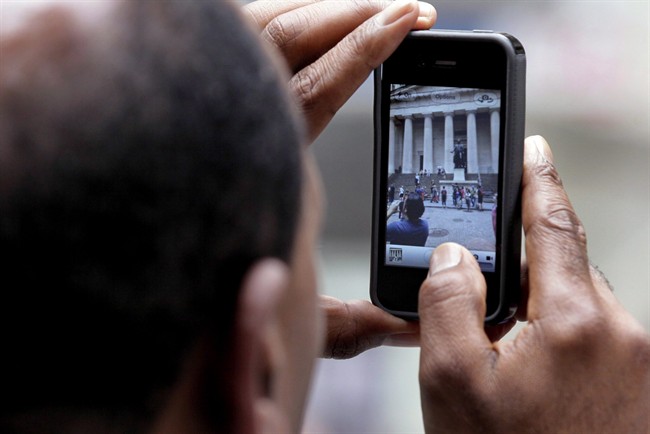OTTAWA – Feel like your cellphone bill is climbing higher and higher? Not so for the average Canadian, according to an annual study commissioned by the Canadian Radio-television and Telecommunications Commission (CRTC) and Industry Canada.

The study broke down wireless usage into four levels:
- Level 1: 150 incoming and outgoing minutes per month, with 10 per cent of outgoing minutes treated as long distance, and no optional features
- Level 2 a.k.a. the average Canadian: 450 incoming and outgoing minutes per month, with 10 per cent of outgoing minutes treated as long distance, two optional features (voice mail and call display), and 300 text messages per month
- Level 3: 1,200 incoming and outgoing minutes per month, with 15 per cent of outgoing minutes treated as long distance, full set of optional features, 300 text messages and 1 GB data usage per month
- Level 4: Unlimited nationwide talk and text (no international calling included), voice mail and call display, and 2 GB data usage per month. Note: This was the first time this category was included in the annual study so there’s no comparison to last year
Are you in Level 1?
Then you are on the losing end: The study showed the price of the Level 1 basket increased by roughly 16 per cent compared to last year, from roughly $31 to $36.
Are you the average in Level 2?
Then it’s the same old cellphone-song for you. The Level 2 service basket price remained relatively steady at $45, according to the study.
Big spender in Level 3?
- Posters promoting ‘Steal From Loblaws Day’ are circulating. How did we get here?
- Canadian food banks are on the brink: ‘This is not a sustainable situation’
- Video shows Ontario police sharing Trudeau’s location with protester, investigation launched
- Solar eclipse eye damage: More than 160 cases reported in Ontario, Quebec
You’re in luck! The price of the Level 3 service basket declined by roughly 15 per cent, dropping from roughly $94 to $80, said the report by Wall Communications Inc.
Vice-President Bernie Lefebvre said looking at the change from three-year to two-year contract terms, you’d expect prices would go up because handsets would be amortized over a shorter period of time—and you do see an increase in the lowest usage, voice-only package level.
“But on the other hand for the higher usage voice text data plans, prices have gone down by 15 per cent, and that’s plans where you’ve got handsets, including the iPhone or Galaxy S4, for instance,” said Lefebvre.
“So it’s hard to say what effect the contract term change might’ve had on those prices given the fact that depending on the usage level, you see different results.”
“We’re not the lowest cost country by any stretch in the world, but you have to take into consideration the quality of the service you’re receiving, as well. We’re in a big country and we’ve got 4G LTE networks in place, which is ahead of many others.”
“Consumers probably feel they’re paying a high price but at the same time they’re getting a pretty high quality service compared to what you see in other countries.”
The Conservative government has been bringing in a number of policies that it says will increase competition and reduce costs for consumers as wireless pricing has become a hot political issue.
Here’s a comparison of plan costs from the report, comparing incumbents Rogers, Bell and Telus with new entrants Wind, Mobilicity, Montreal’s Videotron and Public Mobile. (Though Public Mobile was acquired by Telus in late 2013, the study said it is treated as a new entrant for consistency with previous years’ studies).
How much are you paying compared to average costs?



Comments